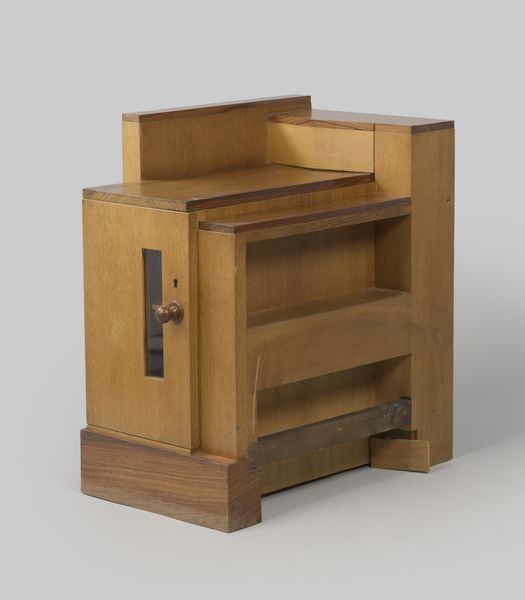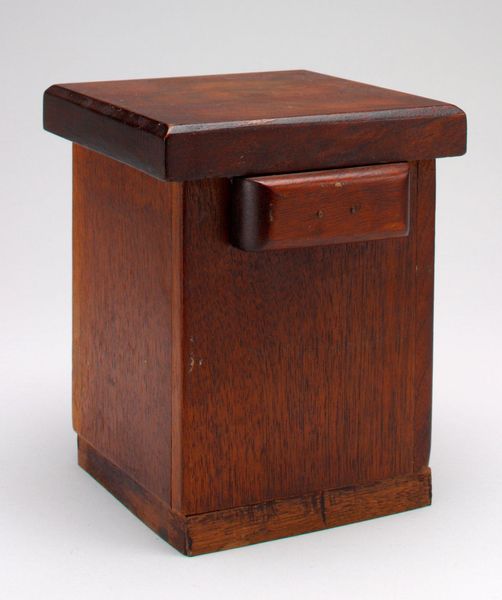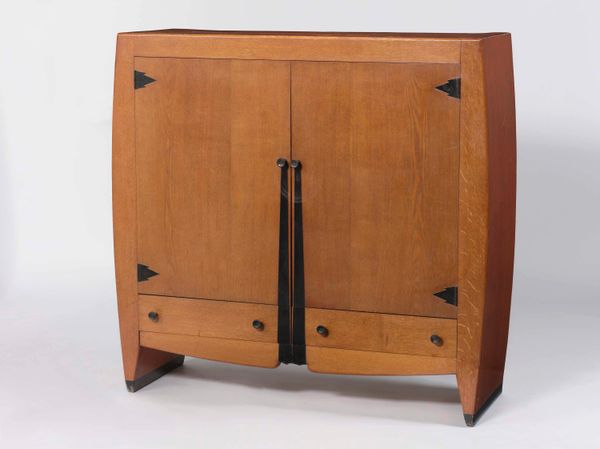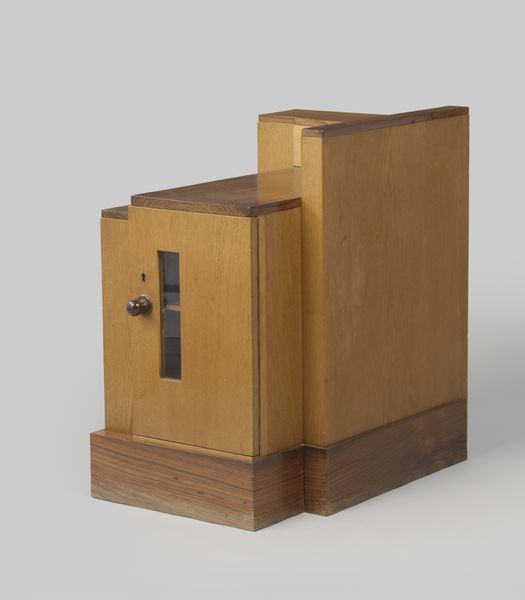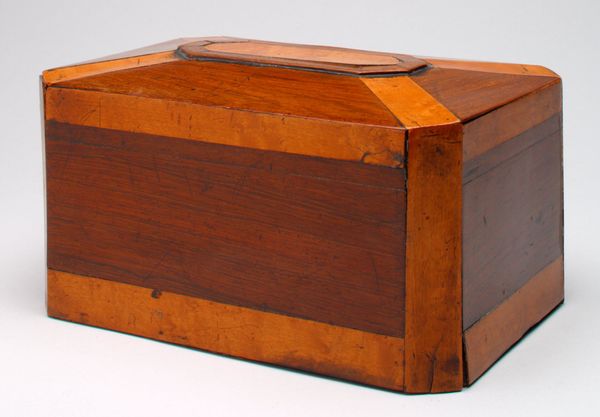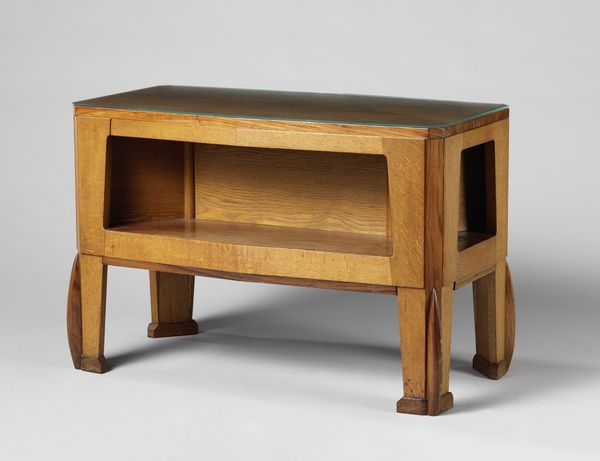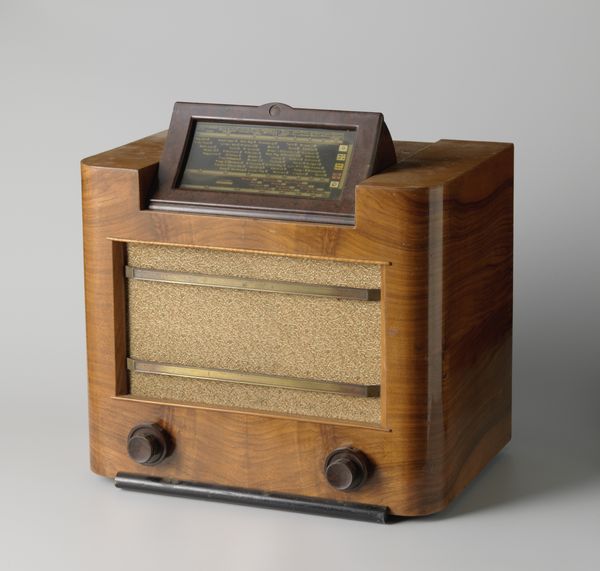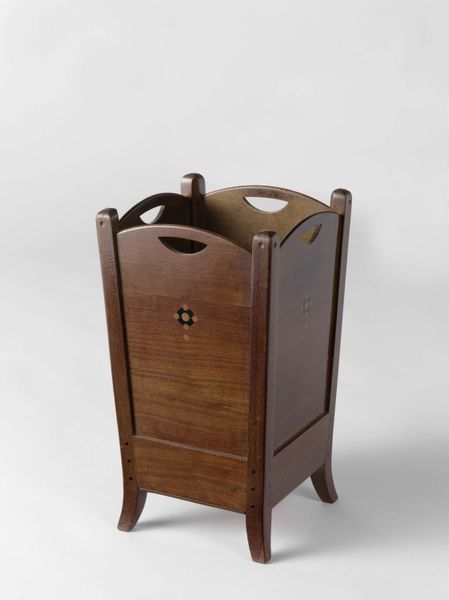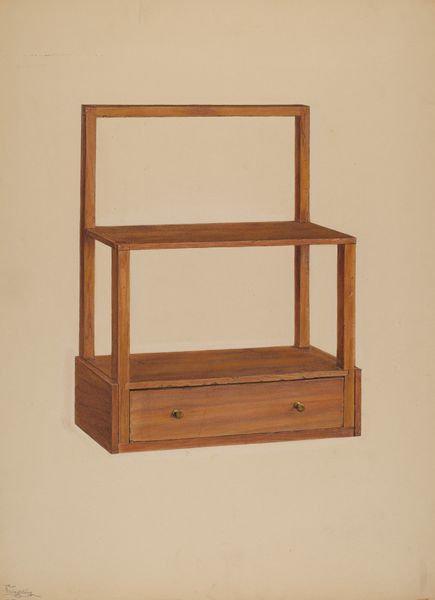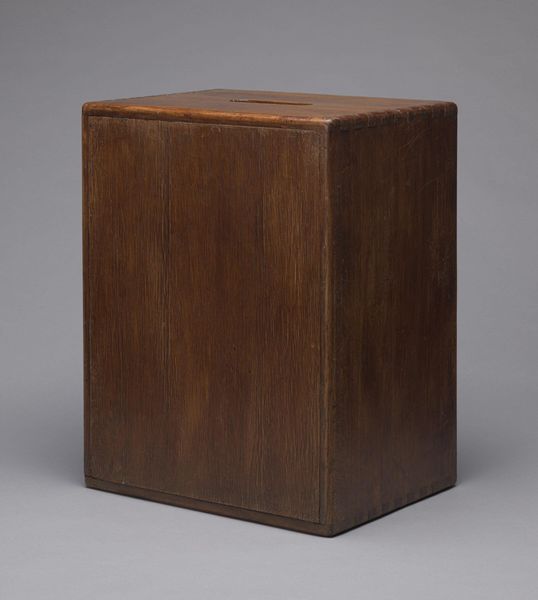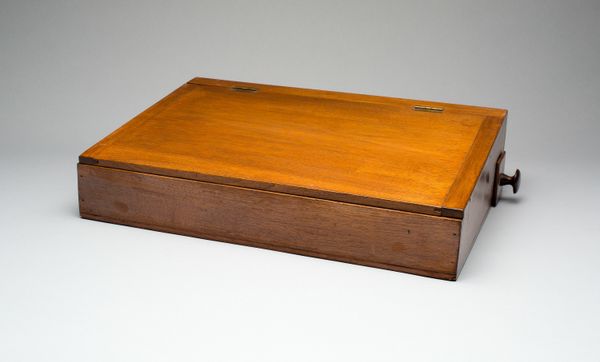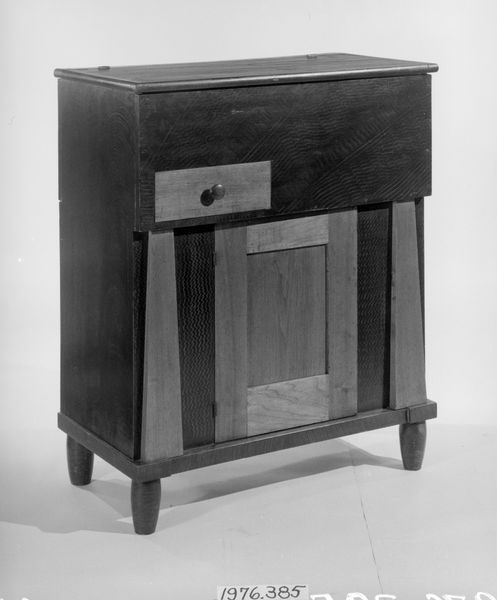
glass, wood
#
art-deco
#
furniture
#
glass
#
wood
#
decorative-art
Dimensions: height 80.5 cm, width 95.5 cm, depth 49.5 cm, weight 33.4 kg
Copyright: Rijks Museum: Open Domain
Curator: Well, hello! Today we are looking at a piece called "Theetafel," which translates to "Tea Table", made sometime between 1910 and 1927 by E.G.C. Schubad. It's currently residing here at the Rijksmuseum. Made from wood and glass, it's a rather unique piece of decorative art with Art Deco elements. What are your initial thoughts? Editor: It feels solid, substantial. Sort of unassuming, almost... homely, but in a comforting way. The wood has a warmth to it that draws you in, like an old friend offering you a cup of tea, funnily enough. Curator: Yes, "homely" is a great word for it. The functionality of such a piece within the domestic space is also key. Think about the labour involved – the careful craftsmanship required to shape the wood, fit the glass… these weren’t mass-produced objects back then. And it does beg the question, doesn’t it? What sort of teas, what sort of conversations did this piece witness? Editor: Exactly! Imagine all the whispered secrets shared over steaming cups, or the quiet afternoons spent leafing through books within view of the shelf... The muted color palette creates such a calm environment around it. Did it ever house anything more exciting than tea, I wonder? Perhaps some forbidden absinthe? Curator: It certainly leaves itself open to interpretation, doesn’t it? I believe its strength lies in its unpretentious nature; it doesn’t shout for attention but invites closer inspection, closer interaction. We can trace the very culture through objects such as this one – a beautiful synthesis of function, form, and historical context. Editor: It's true; it encourages reflection, almost like gazing into a hearth. You start dreaming about simpler times... about slowing down. Ultimately, what is so seductive about the cabinet's gentle angularity is, precisely, its implicit appeal for gathering round it. Curator: So true. Thinking about the broader landscape of decorative arts at the time also helps to truly contextualise the place objects such as these may have had within the societal contexts. Food for thought. Editor: Indeed. A humble yet complex piece of furniture; much more than the sum of its materials!
Comments
No comments
Be the first to comment and join the conversation on the ultimate creative platform.
